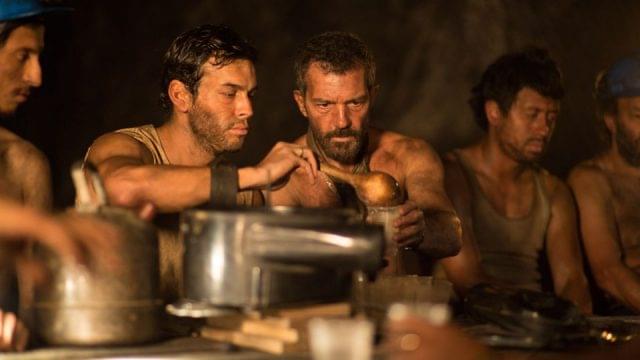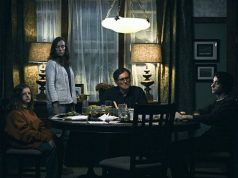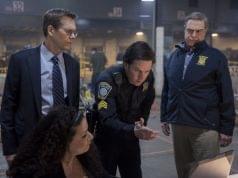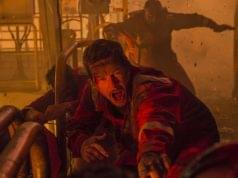
“The 33” is the perfect movie to see if you do not enjoy being surprised, challenged, or inspired. It tells the true story of the 33 Chilean miners who were trapped 2,300 feet underground for several weeks in 2010 before (spoiler alert if you do not remember what happened five years ago) they were all rescued alive. It was a miraculous and happy story, but the film version is a slog — an earnest slog, but a slog nonetheless. I suspect reading the Wikipedia entry about the event would be more stimulating.
It begins the way disaster movies often do, with a few vignettes introducing us to a handful of the characters. Warning bells went off when I noticed that none of these incidents or people were interesting. Then we meet Lou Diamond Phillips, the mine supervisor whose job (as he mentions twice) IS TO KEEP THESE MEN SAFE, DAMMIT. He brings up a concern to the bossman, who takes the standard “we can’t afford to stop and investigate, time is money” approach of all villainous bossmen.
Well, wouldn’t you know it, La Bamba was right, and the mine collapses. The 33 men are safe(-ish) in a refuge area, on top of which is now sitting a rock that weighs as much as two Empire State Buildings. (Topside, the computer program that explains this to the rescuers includes two icons of the Empire State Building, to help them grasp the concept of something weighing that much.) But as Antonio Banderas, deep in the mine, puts it, “That’s not a rock, it’s the heart of the mountain. She finally broke.” You guys, the mine collapsed because they made the mountain sad.
While Chile’s minister of mining (Rodrigo Santoro) tries to formulate a rescue plan, the miners ration their food and try to stay sane. Again, if you were hoping for tension or drama, forget about it. For the most part, everyone gets along pretty well, and conflicts are quickly resolved. Even with about 20 of the 33 men being relegated to nameless background players, the mini-dramas between characters are hasty and underwritten. One of the guys has a sister up top, inexplicably played by Juliette Binoche. One of them has both a wife and a mistress who are fighting over him (and HOO BOY, brace yourself for THAT bit of comic relief). One of them has a pregnant wife. And so forth.
No disrespect to the men this actually happened to, of course, whose lives I’m sure are vivid and interesting. But director Patricia Riggen and her cadre of screenwriters (one for the “screen story,” three more for the script) render them all as nobodies, their personalities barely distinguishable from one another. Most aren’t even stock characters. Stock characters have identifiable traits.
Except for a touching sequence near the end where the men fantasize about beautiful women lavishing them with food, nothing in the film registers as meaningful. Nothing conveys the resilience and courage the men had, either, nor are their struggles given any weight. It’s just a rote recitation of the facts, one that seems sincere in wanting to pay tribute but is too timid to dig deep.
C (2 hrs., 7 min.; )





